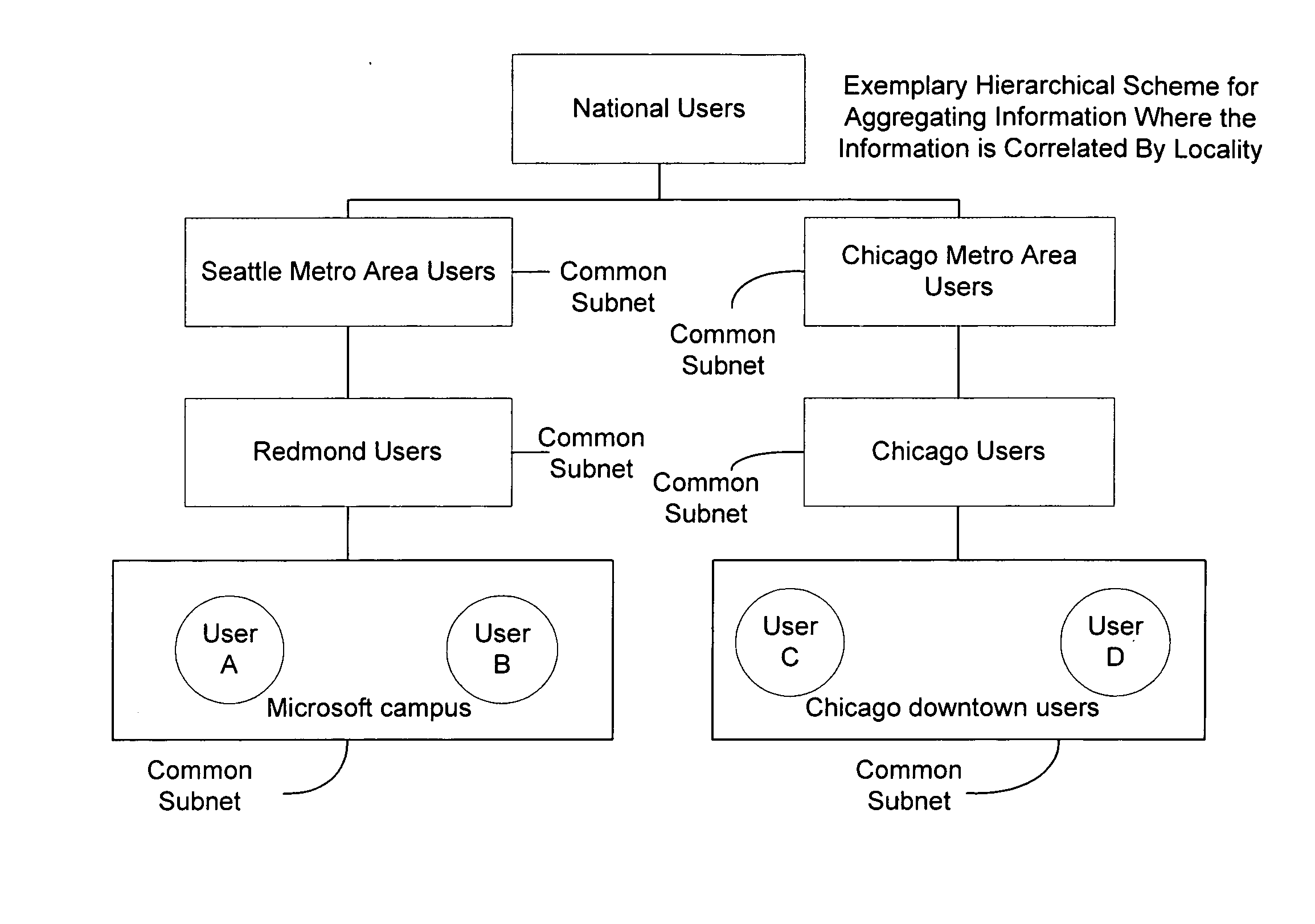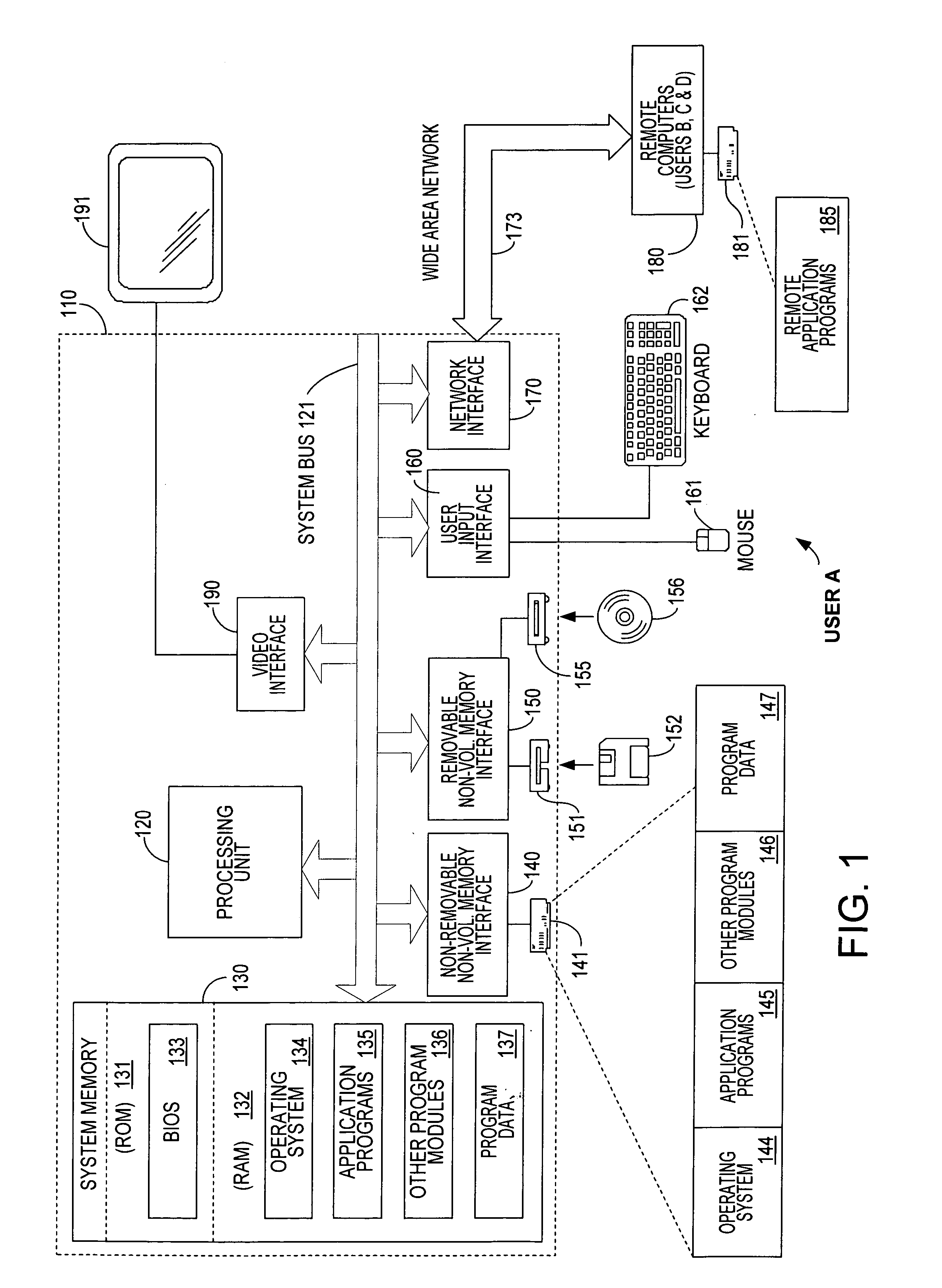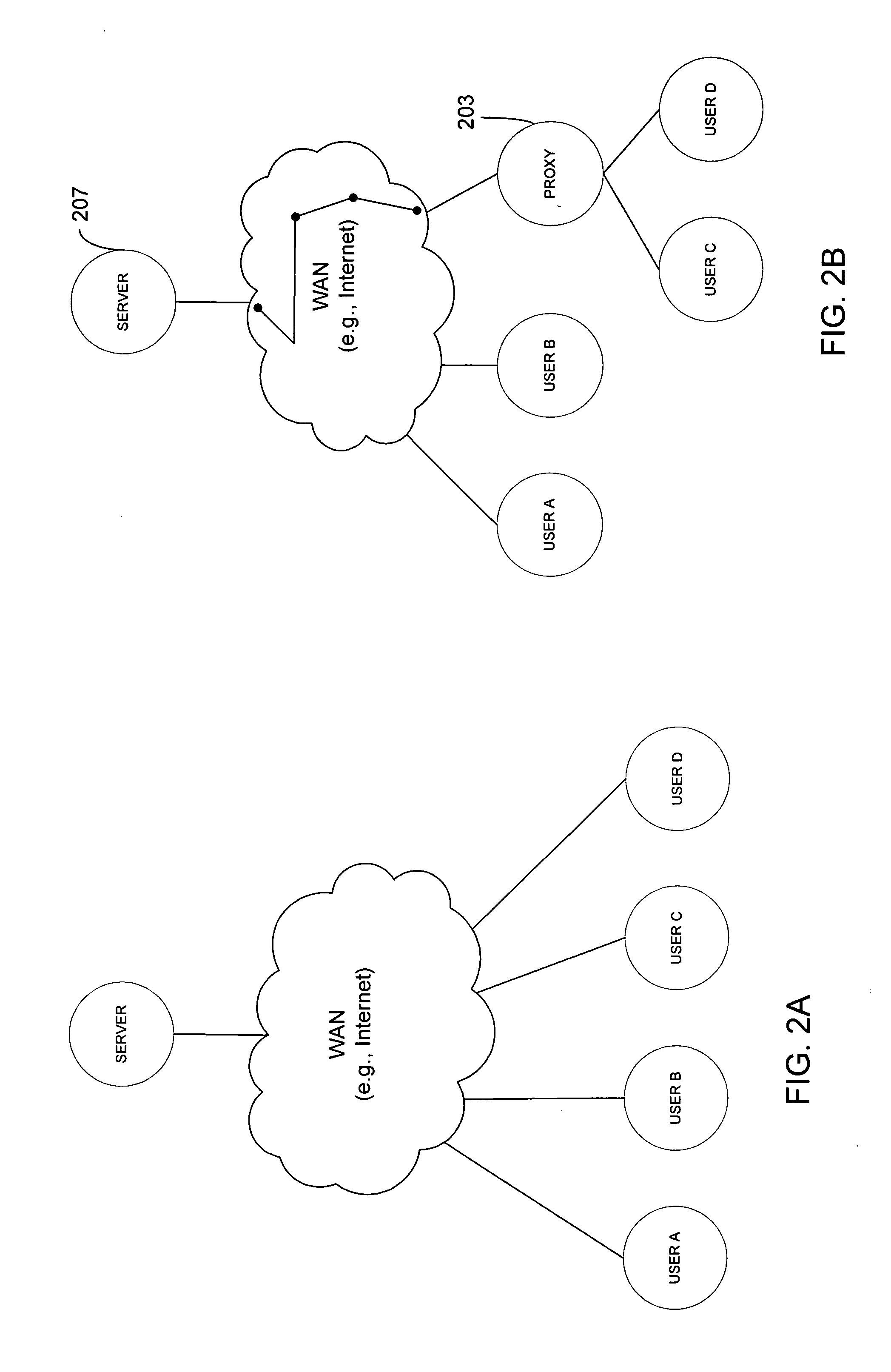Profiling wide-area networks using peer cooperation
a wide-area network and peer cooperation technology, applied in the field of peertopeer systems, can solve the problems of slow download time and inability to download from a website, and achieve the effects of improving customer service, improving analysis reliability, and accurate description of network performan
- Summary
- Abstract
- Description
- Claims
- Application Information
AI Technical Summary
Benefits of technology
Problems solved by technology
Method used
Image
Examples
Embodiment Construction
[0030] Turning to the drawings, wherein like reference numerals refer to like elements, the invention is illustrated as implemented in a suitable computer networking environment. The networking environment is preferably a wide area network such as the Internet. In order for information to be shared among host nodes, the network environment includes an infrastructure for supporting the sharing of information among the end hosts. In the illustrated embodiment described below, a peer-to-peer infrastructure is described. However, other infrastructures could be employed as alternatives—e.g., a server-based system that aggregates data from different end hosts in keeping with the invention. In the simplest implementation, all of the aggregated information is maintained at one server. For larger systems, however, multiple servers in a communications network would be required.
[0031]FIG. 1 illustrates an exemplary embodiment of a end host that implements the invention by executing computer-e...
PUM
 Login to View More
Login to View More Abstract
Description
Claims
Application Information
 Login to View More
Login to View More - R&D
- Intellectual Property
- Life Sciences
- Materials
- Tech Scout
- Unparalleled Data Quality
- Higher Quality Content
- 60% Fewer Hallucinations
Browse by: Latest US Patents, China's latest patents, Technical Efficacy Thesaurus, Application Domain, Technology Topic, Popular Technical Reports.
© 2025 PatSnap. All rights reserved.Legal|Privacy policy|Modern Slavery Act Transparency Statement|Sitemap|About US| Contact US: help@patsnap.com



